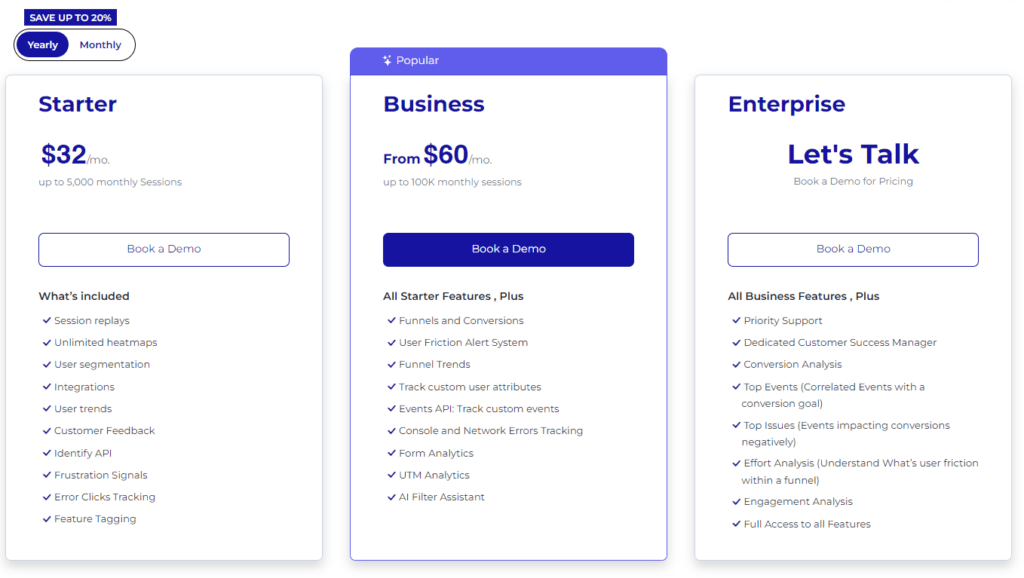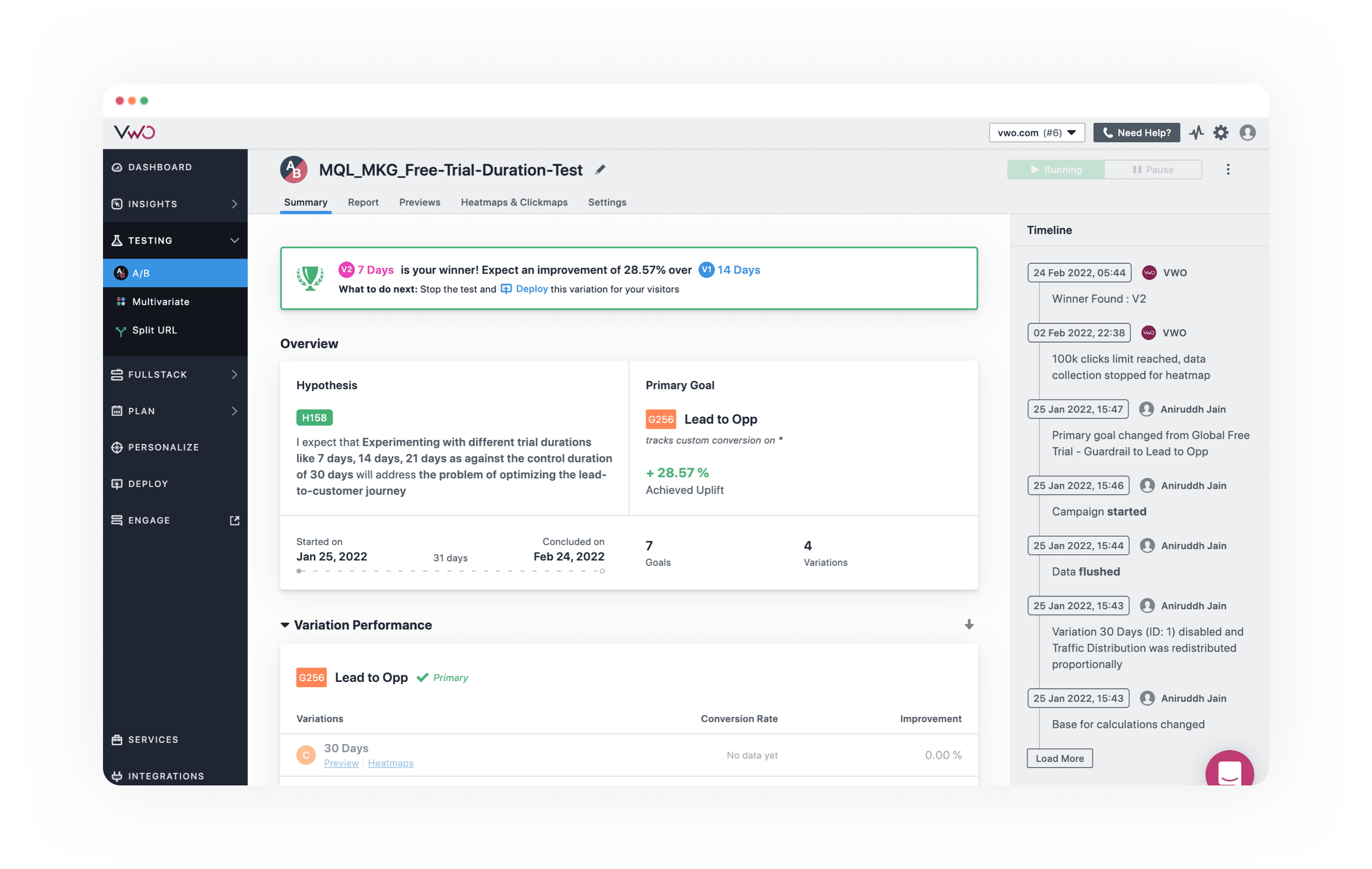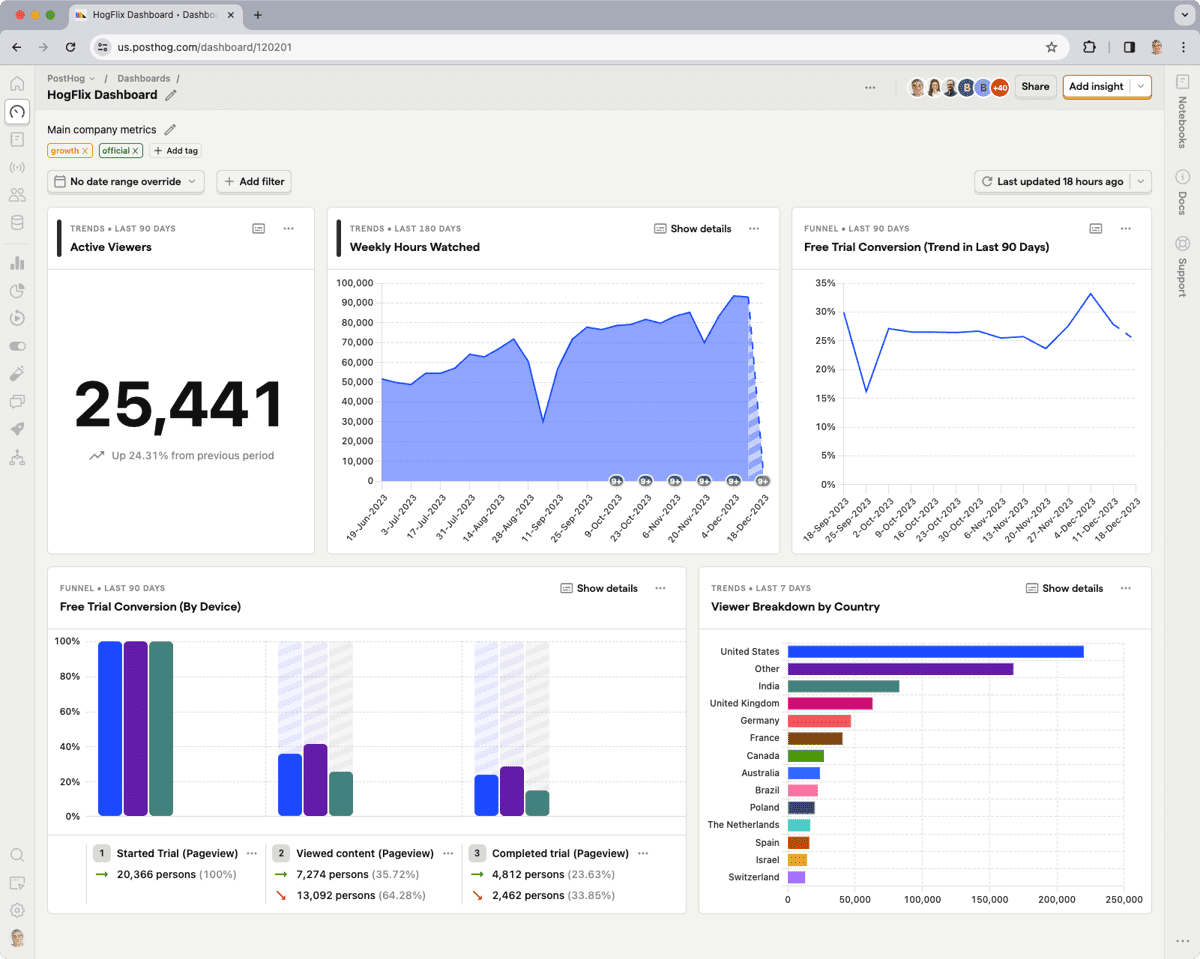Are you looking to optimize your website's performance but unsure if VWO is the right choice? You're in luck! We've compiled...

The Power of Real-Time Customer Analytics
Customer behavior moves too fast for traditional analytics to be effective. These days, you need to analyze touchpoints in real-time to provide a satisfying experience across the board.
While historical data can still be a huge help, real-time analytics help you analyze in the moment instead of waiting for changes that can hinder business success.
Below is what you need to know about real-time customer analytics, how it works, the benefits it provides, and how you can use it for your operations.
What is Real-Time Customer Analytics?
Real-time customer analytics is the practice of collecting, processing, and analyzing customer data as it happens. Unlike traditional analytics, which may take hours, days, or even weeks to produce insights, real-time analytics gives you immediate feedback on customer behavior and interactions.
With real-time customer analytics, you can see everything from which products they’re checking out to how they’re navigating through your site. With this live data, you can better understand your customers better so you can make immediate decisions that improve their experience and maximize your sales.
Types of Real-Time Analytics Capabilities
Real-time customer analytics can take many forms, each offering valuable insights to help you connect with your customers. There are six main types:
1. Segmentation Analytics
This type divides your customers into groups based on behaviors and characteristics, like age, location, or buying habits. When you understand these segments, you can tailor your marketing and product recommendations to meet their specific needs.
2. Customer Acquisition Analytics
Customer acquisition analytics focuses on how new customers find and interact with your business. It tracks where your traffic comes from, which marketing channels work best, and what actions lead to conversions.
3. Customer Engagement Analytics
This sub-type looks at how customers interact with your business over time. It tracks metrics like page views, time spent on site, and interactions.
If you see a particular page getting a lot of attention, you can improve it or apply similar strategies elsewhere to keep customers hooked.
4. Customer Satisfaction Analytics
Customer satisfaction analytics measure how happy your customers are with their experience through surveys, reviews, or direct feedback. Real-time data lets you address issues immediately and turn potential negatives into positives. If a customer isn’t satisfied, you can step in and fix it right away.
5. Customer Churn Analytics
This type of customer analytics helps you understand why customers might leave. It tracks behaviors that signal a customer is about to quit. With real-time insights, you can act fast to retain them, like offering a special deal to keep them around.
6. Customer Lifetime Value Analytics
Finally, we have customer lifetime value analytics, which estimates the total value a customer brings over their entire relationship with you.
By analyzing purchase history and behavior in real-time, you can identify high-value customers and focus on keeping them happy with exclusive deals and personalized support.
Different Ways to Use Real-Time Data
Businesses can use real-time customer insights to optimize customer interactions throughout the whole journey. Here are some practical ways to use real-time data:
Customer Service Interactions
When you can monitor user behavior as it happens or immediately after touchpoints, you can identify and address issues before they become problems.
For example, if a user is repeatedly clicking on a button without success, you can step in shortly after with a chat or a helpful pop-up to turn a potential frustration into a positive experience.
Real-time data also allows your support agents to see what the customer is doing, which helps them provide personalized and efficient support. Instead of asking the customer to explain their problem from scratch, the agent can jump right into a solution.
After resolving an issue, you can gather immediate feedback through quick surveys or ratings to help you gauge customer satisfaction and improve your support process.
Product Recommendations
Real-time data lets you offer personalized product suggestions on the spot. If a customer is browsing laptops, you can recommend accessories like cases or external hard drives right then and there.
Aside from improving their customer experience, it also increases your chances of making a sale.
Website Optimization
Rapid analytics is an advantage for website optimization because it gives you a clear picture of how visitors interact with your site. You can see where they’re spending most of their time, which pages they love, and where they’re dropping off, so you know exactly how to improve the customer journey.
If you notice a particular page is causing visitors to leave, you can jump in and adjust the content or layout to make it more engaging and user-friendly. Maybe the page is too cluttered, the info isn’t clear, or the call-to-action needs to be more catchy.
Real-time data also makes it easy to test different versions of a page. You can try A/B testing to see which layout, wording, or images work best. This way, you’re not guessing; you’re making smart decisions based on actual data.
Plus, real-time analytics can catch technical issues that might be annoying your users. If a page is loading slowly or a form isn’t working, you can spot these problems quickly and fix them before they drive users away.
Customer Behavior Insights
Aside from optimizing your website, analytics capabilities embedded into your page can also help you understand customer preferences and how they navigate your site. For example, if people are spending time on product pages but not buying, those pages might need better descriptions or images.
These insights also help you personalize the user experience. If someone frequently visits a specific category, you can tailor recommendations and offers to their interests, making them more likely to buy. Real-time data also allows you to spot popular and underperforming pages, so you can create more content that resonates with your audience.
Marketing Campaign Adjustments
Real-time analytics lets you tweak your marketing campaigns as they unfold so you don't waste precious time running something that isn't working. If an email campaign isn’t getting enough clicks, you can instantly change the subject line or call to action to improve engagement. This way, you’re not stuck waiting for post-campaign reports to make adjustments—you can optimize on the go.
This flexibility extends to all types of marketing efforts, from social media ads to content marketing. If a social media ad isn’t performing well, adjust the ad copy, images, or targeting. If a blog post isn’t drawing traffic, update the headline or visuals, or promote it through different channels.
Real-time data also helps you pinpoint the best times to reach your audience and tailor your messages for different segments, which helps make sure your marketing is always effective and efficient.
Inventory Management
For e-commerce businesses, real-time data helps you manage your inventory more efficiently. If a product is flying off the shelves, you can adjust your stock levels immediately to meet customer demand and avoid running out or overstocking. No more guesswork or tedious estimations.
Event Tracking
Analytics systems can help you monitor events like sales, product launches, or promotions so you get instant insights into how your audience is reacting.
For example, during a sale, you can see which products are selling fast and which ones aren't. If an item is lagging, you can offer a bigger discount or feature it more prominently. Conversely, if something's selling out quickly, you can manage inventory and even employ cross-selling strategies.
For product launches, real-time data helps you gauge reception immediately. Track page visits, time spent on product pages, and conversion rates to see if adjustments are needed.
Maybe visitors need more info or better images to make a purchase. Promotions also benefit as you can monitor which channels—email, social media, ads—drive the most traffic and sales.
Dynamic Pricing
Dynamic pricing can give you a competitive advantage, but it won't make much sense if you use historical data, which may be outdated.
With real-time customer data, however, you can adjust your prices based on current market conditions, demand, and what your competitors are up to. Imagine you spot a surge in demand for one of your products. You can instantly bump up the price to maximize your profit while the demand is high.
On the flip side, if a product is gathering dust on the shelves, you can quickly drop the price to stimulate sales and move that inventory.
Dynamic pricing also lets you stay one step ahead of your competitors. If they slash their prices, you can respond immediately to match or even undercut them, which makes sure you remain the go-to choice for customers.
Why Do You Need to Analyze Customer Data in Real-Time?
Now that we've gone over some of the uses of real-time data, it's easy to see how it can improve customer satisfaction and your overall business profitability. But what other benefits of real-time customer data do you need to consider?
Better Customer Satisfaction and Loyalty
Customer satisfaction is perhaps the most important driving force in sales, which is why real-time analytics is so important. For one, it allows you to understand and respond to customer needs immediately and ensures that they have the best experience with your brand.
Additionally, real-time analytics enables you to personalize the customer journey. By understanding what each customer is looking for, you can offer tailored recommendations, timely assistance, or special offers that match their preferences and behaviors.
Hence, they feel valued and understood, which improves overall satisfaction and customer loyalty.
Reduced Customer Churn
As we've mentioned, real-time data gives you instant insights into how they’re behaving, so you can catch early signs that someone might be thinking about leaving.
Reaching out to customers at the right time makes a big difference. If someone hasn’t used your service in a while, a quick reminder, a special offer, or helpful support can bring them back.
Responding quickly to negative feedback shows that you care about their experience and are working to make things better.
Real-time data also helps you see patterns that work against customer retention. You can understand why people might be leaving and take steps to fix those issues, whether it’s improving your product, optimizing customer service, or tweaking your pricing.
Faster Decision-Making
Real-time insights can help you make data-driven decisions responding to changing market conditions or customer behavior. For example, if more customers browse a certain product category, you can anticipate higher demand and adjust your inventory.
Plus, predictive analytics help fine-tune your marketing efforts. Knowing which products or services are gaining interest lets you focus your marketing campaigns more effectively. If you can predict future behavior based on data, you can prepare promotions in advance to capture that interest at its peak.
In addition to all that, you'll be able to reduce risk and make more sensible business decisions. Trying new strategies or introducing offerings will be less risky because immediate quantitative data and qualitative insights will tell you if they are working.
Lower Costs
Hardware and software systems for real-time analytics can be expensive upfront, but the data-driven decision-making they provide pays off in the long run. More specifically, you can quickly identify inefficiencies and areas where resources are being wasted.
Analytics can help you save money in various aspects of your operations, including customer service, sales, marketing, customer experience management, and more.
How Can FullSession Help With Real-Time Analytics?
FullSession is your go-to tool for mastering real-time customer analytics without the massive learning curve. It has every tool you need to make quick, informed decisions that improve customer satisfaction and drive business growth, including:
- Detailed session replays: See exactly how customers navigate your site, spot issues, and find opportunities for improvement.
- Heatmaps: Visualize where users click, scroll, and spend the most time to optimize your site layout for better engagement.
- Customer feedback tools: Measure customer sentiment and find out what you can improve based on what they need, want, and expect from your brand.
- Custom reports: Create reports tailored to your needs, giving you the most relevant insights for your business.
FullSession Pricing Plans

The FullSession platform offers a 14-day free trial. It provides two paid plans—Basic and Business. Here are more details on each plan.
Here are more details on each plan.
- The Starter plan costs $39/month or $32/year and allows you to monitor up to 5,000 monthly sessions with up to 6 months of data storage.
- The Business plan costs $75/month or $60/year and helps you to track and analyze up to 100,000 monthly sessions with up to 12 months of data storage.
- The Enterprise plan has custom pricing and offers customizable sessions plus full access to all features.
Install Your First Website Feedback Form Right Now
It takes less than 5 minutes to set up your first website or app feedback form with FullSession, and it's completely free!
FAQs About Real-Time Customer Analytics
What types of businesses can benefit from analyzing customer data in real-time?
Almost any business with an online presence can benefit from real-time customer analytics. This includes e-commerce stores, service-based websites, and even blogs looking to improve user engagement.
Is real-time data analysis difficult to implement?
It can be straightforward with the right tools. Platforms like FullSession are designed to be user-friendly, offering easy setup and integration.
How often should I check my real-time analytics?
It depends on your business needs. For some, daily checks might be sufficient, while others may need to monitor data continuously, especially during peak times or major campaigns.
Can real-time analytics replace traditional data analysis?
No, it complements traditional data analysis. While real-time data helps with immediate decisions, traditional data analysis provides a long-term view and deeper insights.




